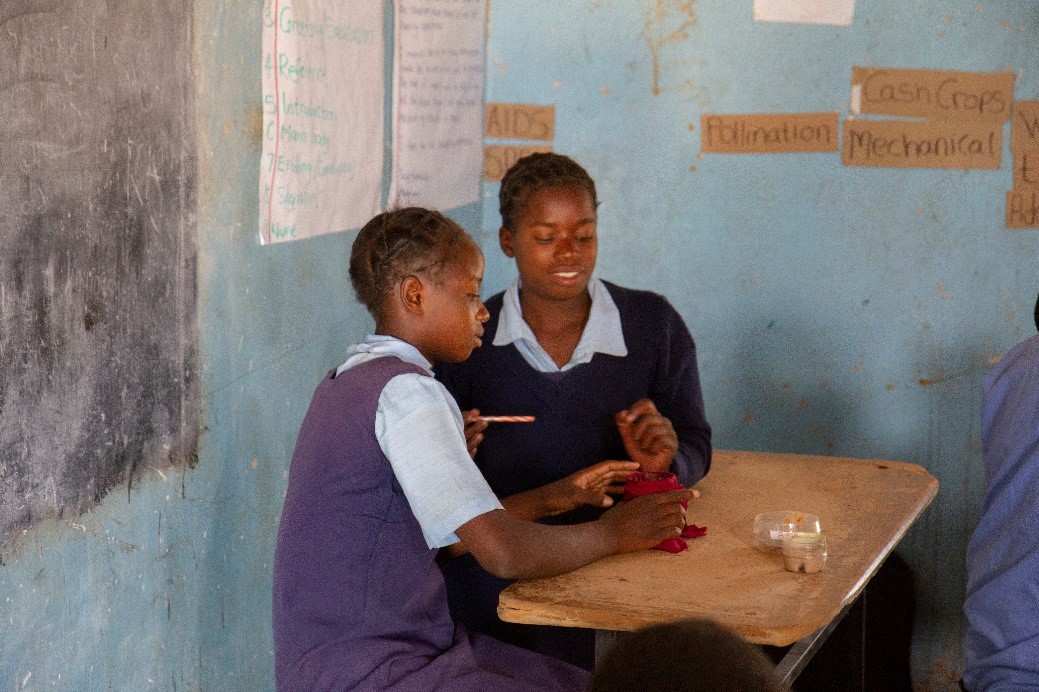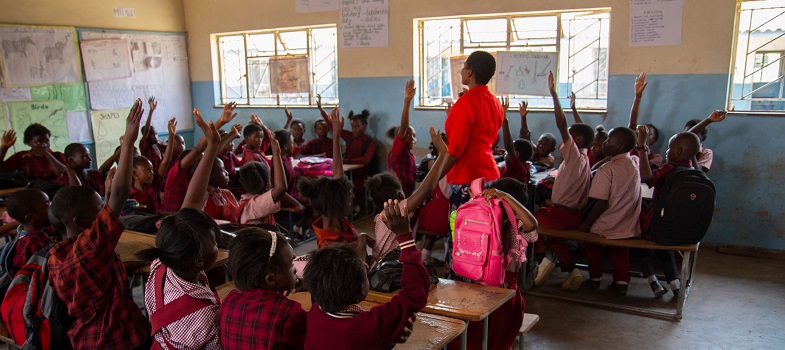Training guide
3. Pair work

Pupils
working in pairs in Zambian classroom
Pair work is one of the easiest approaches to use. Patricia is a primary school teacher in Zambia. Read what she has to say about pair work:
Classroom Example 1.2: Pair Work'I have 125 students in my class so I always thought that active teaching approaches could not work, but I started using pair work and I have learnt that that is not the case. I often set two or three open questions which I ask students to discuss in pairs. While they are talking, I walk around and listen. This can be quite difficult as the room is very full! But we manage and the children like the fact that I move around more. After five minutes, I ask for some responses. I can’t possibly get feedback from every pair, but during a week, I try to make sure that most people have been the ones to feed back at least once. Working in this way has also helped me to notice the children more. I did not realise that although Charlie is noisy, he struggles with open-ended questions and that, although Grace is really quiet, she thinks deeply and has really good ideas.' |
Listen to the audio or read the text below which explains some of the main features of pair work.
|
Audio transcript In everyday situations people work alongside, speak and listen to others and see what they do and how they do it. This is how people learn. As we talk to others, we discover new ideas and information. In classrooms, if everything is centred on the teacher, then most learners do not get enough time to try out or demonstrate their learning or to ask questions. Some learners may only give short answers; and some may say nothing at all. In large classes, the situation is even worse, with only a small proportion of learners having the chance to say anything at all. But if you use pair work, this gives learners the chance to think and try out ideas and new language. It can provide a comfortable way for learners to work through new skills and concepts; and works well in large classes. Pair work is suitable for all ages and subjects and it is especially useful in multilingual and multi-grade classes, because pairs can be arranged to help each other. Once routines for pair work are set up, you will find that learners enjoy learning this way. |
